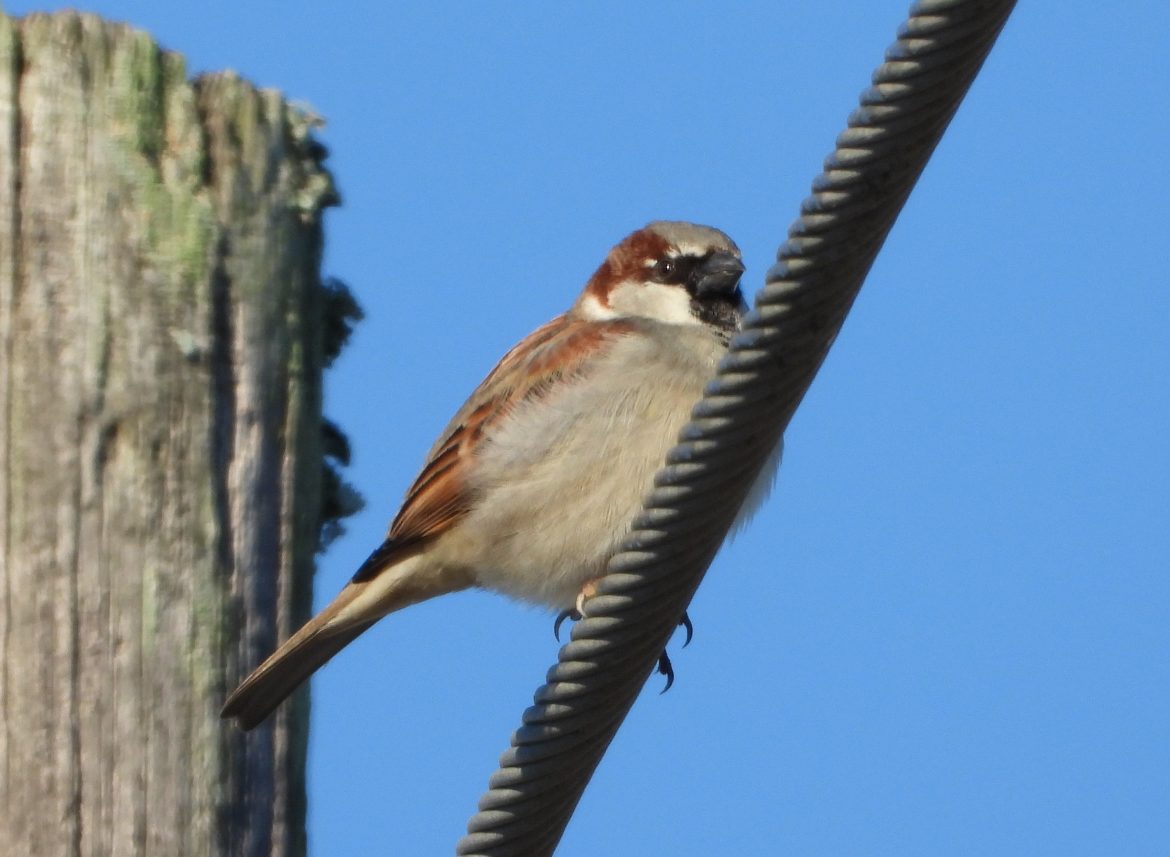By Celeste Silling
The most common bird I see around my town is probably the House Sparrow. This little bird is quite cute and I like watching them flit around and interact with one another… even despite knowing that they don’t really belong there.
The House Sparrow is a European bird, a non-native to Texas and the rest of the Americas. This species was introduced to this continent several times over many years, largely in the 1800’s. The culprits had a range of motivations, and we have to take the documented stories of these incidents with a grain of salt. Some simply wanted a taste of Europe brought to the United States. Some wanted the House Sparrow around their homes because it was mentioned in the Bible. Some wanted to control the insect populations by bringing in new predators.
Whatever their reasons were, these sparrow-lovers were successful. The House Sparrows were able to breed, nest, and raise their young here in the states, and the population boomed. Now, well over a hundred years later, the species has spread across our country. They can be found in most areas with houses or buildings.
One of the main issues with the House Sparrow take-over is their nesting habits. This bird like to nest in buildings or other man-made structures, and this includes nest boxes that were intended for native bird species. In fact, a House Sparrow will even kick out a native bird from a nest box that’s already in use. This is a problem for species such as Eastern Bluebirds and Purple Martins which heavily rely on manmade nest boxes for their reproductive success.
House Sparrows make their nests by collecting dried vegetation, such as grass, and stuffing it into their nest hole. They can also supplement the dried plants with other materials such as string, cotton, or dryer lint. I’ve seen them nest in dryer vents and other cavities in walls, and of course in nest boxes. If you see a House Sparrow flying to and from its nest, you can undo some of its construction work by simply taking the nesting materials out.
The other main issue is that House Sparrows eat seeds, insects, and other food that would normally go to the native species. In a world with decreasing insect populations and native plant populations, this can cause a further imbalance in the ecosystem. At feeders, House Sparrows like sunflower seeds, corn, millet, milo, and peanuts. You might be able to deter them by using different seeds that they don’t like, but keep in mind that this might also drive away native species.
House Sparrow populations are declining now in North America. They thrived in farmyards and barns in the last two centuries, but can’t utilize the modern industrial farms in the same way. Interestingly, their populations are also declining in their native habitat in Europe.
House Sparrows aren’t native here, and we should try to control their populations when we can. You can keep an eye out around your home to make sure they don’t nest, which is probably the most humane way of doing things. I like seeing these happy, mischievous little birds at my feeder, but I’d like seeing native birds even more!
Photo caption: A House Sparrow perched on a phone line.
Credit: Celeste Silling

